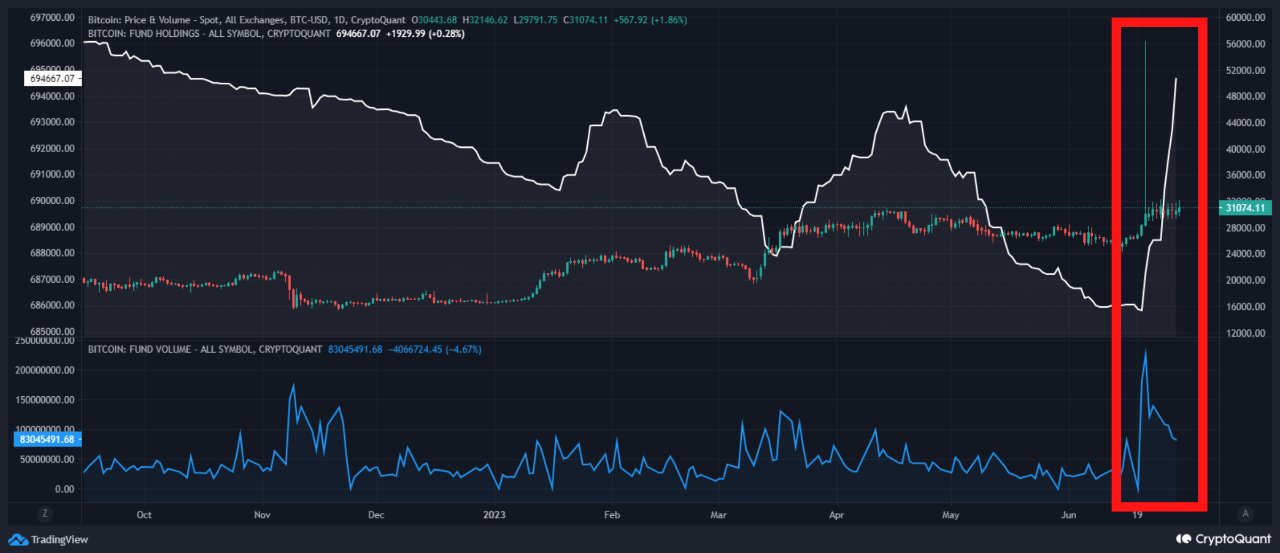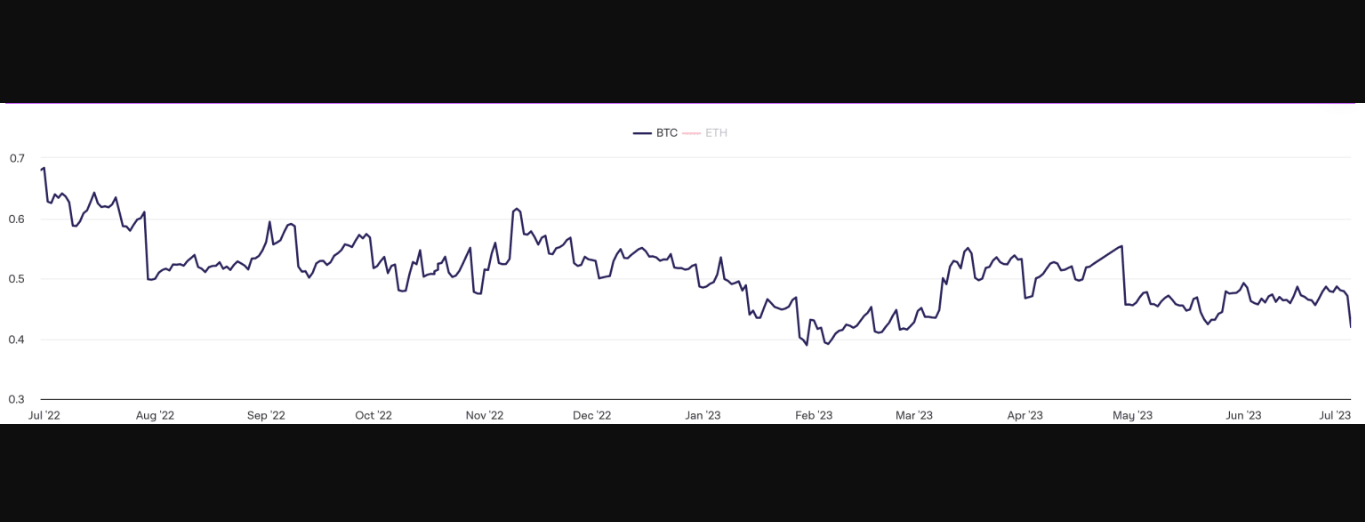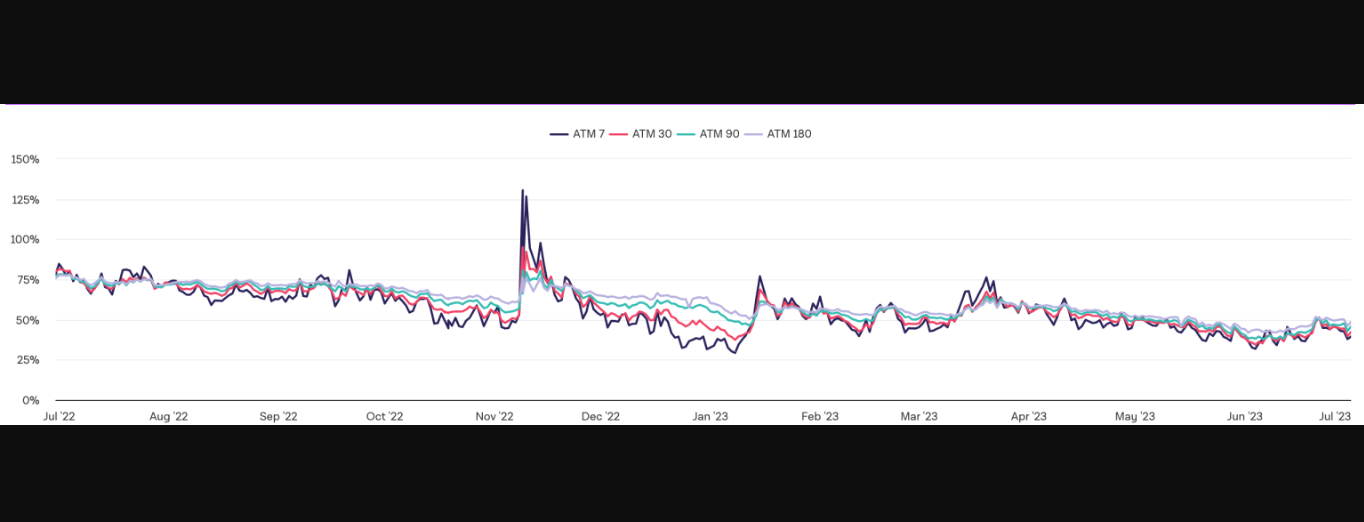- Despite SEC not approving ETFs, it has been observed that major institutions are still showing interest in Bitcoin.
- According to data, the put-call ratio of Bitcoin transactions has significantly decreased. A decreasing put-call ratio usually indicates a shift in sentiment towards a more bullish or optimistic market outlook.
- A decrease in Bitcoin’s IV implies that the market expects less price volatility or uncertainty for BTC.
Despite the obstacles created by SEC against Bitcoin and cryptocurrencies, institutional firms are increasing their demand for Bitcoin, strengthening the bullish outlook.
Institutional Firms Increasing Their Demand for Bitcoin
SEC’s decision regarding Bitcoin ETF has created significant uncertainty in the crypto markets. Despite SEC not approving ETFs, it has been observed that major institutions are still showing interest in Bitcoin. According to data provided by CryptoQuant, fund holders have shown interest in accumulating Bitcoin.
Institutional investors such as hedge funds, investment firms, and cryptocurrency private funds hold crypto assets. These assets are referred to as “fund holdings.” Examining these holdings provides valuable insights into market dynamics and investor sentiment.
The behavior of these major investors indicates their readiness for long-term Bitcoin investments and their patient approach, as opposed to closely monitoring price fluctuations like short-term investors. The optimistic behavior of these major investors shows parallelism with trader activities.
How Are Traders Behaving?
According to data, the put-call ratio of Bitcoin transactions has significantly decreased. A decreasing put-call ratio usually indicates a shift in sentiment towards a more bullish or optimistic market outlook. The put-call ratio is useful for option trading, comparing the number of put options (bearish bets) on an asset or security with the number of call options (bullish bets).
A decrease in the put-call ratio indicates a decrease in demand for bearish positions compared to bullish positions. It may also imply that market participants have more confidence in the future performance of the asset and are less concerned about potential downside risks.
A factor that can affect bullish sentiment is the decreasing Implied Volatility (IV) indicator for Bitcoin. A decrease in Bitcoin’s IV implies that the market expects less price volatility or uncertainty for BTC. This can indicate increasing stability and confidence in the cryptocurrency.
For traders, a decrease in Implied Volatility can affect option pricing and reduce the cost of option contracts. Additionally, decreasing potential for large price fluctuations can impact trading strategies and risk management.



